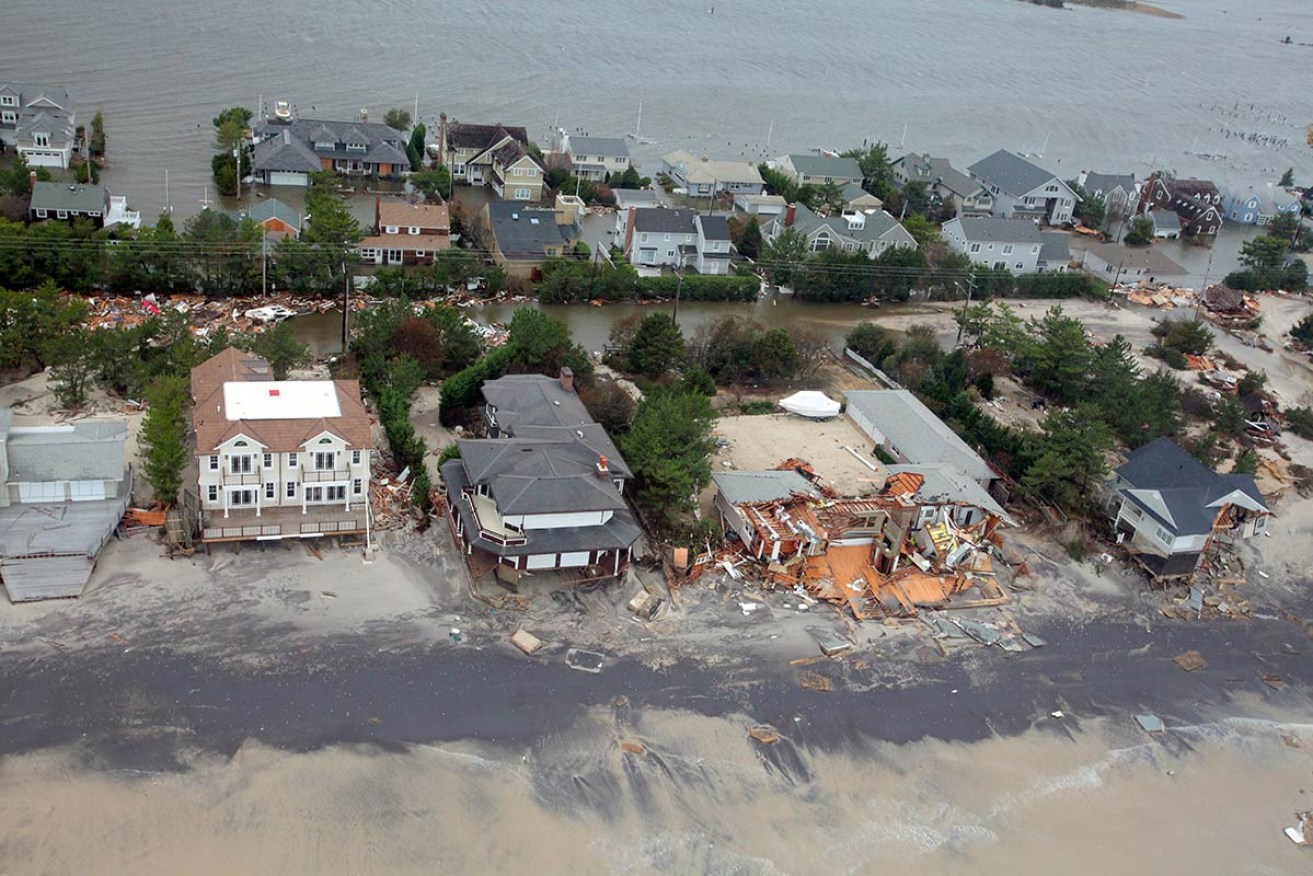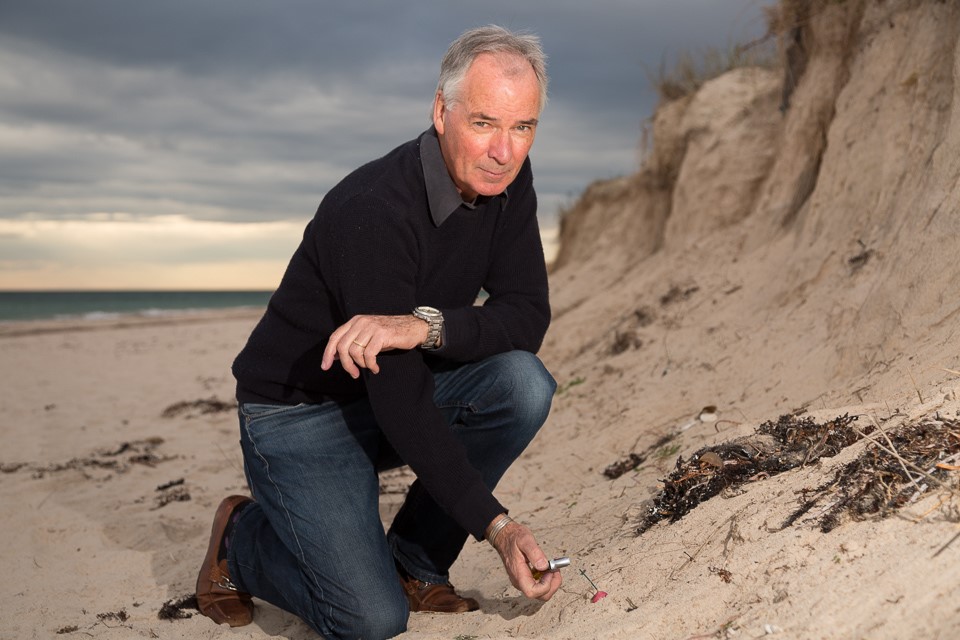
Global warning on saving our precious coasts
Rising sea levels caused by global warming are presenting challenges to hundreds of cities around the world, with ramifications not yet fully addressed by planning authorities.

Aerial view of the damage caused by Hurricane Sandy to the New Jersey shore. 2 Nov, 2012. Photo: Flickr / U.S. National Guard
Flinders Professor Patrick Hesp, who will deliver the 10 Commandments of Coastal Management at an international conference this month, warns of a future of coastal erosion and worse.
He points to unprecedented growth in global populations amplifying coastal erosion problems, with 20% of the world’s population living within 25km of the coast and 40% within 100km.
In 1950, there were 470 coastal cities, while now there are 2,130.

Flinders University Strategic Professor in Coastal Studies, Patrick Hesp, has been presenting his 10 Commandments for Coastal Management around the world this year.
“It issues a telling forecast of a world braced for ongoing impact from climate change,” says Professor Hesp, Strategic Professor in Coastal Studies at Flinders University.
“The exponential growth rate is considerable,” he says. “The impact on the coastal environment has been phenomenal.
“If we don’t start following some hard and fast rules, the world’s coastal areas will be in diabolical trouble as sea levels rise due to climate change.
“Some of the commandments are so obvious – Thou shalt not steal thy neighbour’s sand – yet they don’t get adhered to.”
Professor Hesp has been invited to speak at this month’s International Southeast Asian Geography Association conference in Jakarta, Indonesia (28 November to 1 December).
He spoke on how foredunes behave as sea level rises at the Coastal Geomorphology Conference in Menorca in Spain in September.
Professor Hesp, who is one of the world’s foremost scholars on sand dune formation and change, believes that one of few solutions – considering that communities are generally unwilling to retreat from the coast – is to either find very significant new sand supplies in order to nourish the shoreline, or armour the coast with sea walls as sea levels rise.
However, he notes with interest that the New South Wales Government recently declared it would not pay for the construction of fortified sea walls to save threatened coastal properties.
The importance of his work resonates powerfully in SA, where much of Professor Hesp’s dune modelling work is based.
This was a feature of Professor Hesp’s presentation at the 2017 South Australian State Coastal Conference at North Haven earlier this month.

A storm-damaged house and swimming pool on the New Jersey shore after Hurricane Sandy. 2 Nov, 2012. Photo: Flickr / U.S. National Guard.
“This is where the research work and modelling that we do needs to get traction,” he says.
“The evidence for climate change and sea level rise must change people’s minds about how the coast is being affected, and to have adaptation plans in place. But plans themselves are no good, unless there is money and community willingness to implement them.”
Professor Hesp recently received the Distinguished New Zealand Geographer Award and Medal from the NZ Geographical Society,
He was presented with his award by the NZ Geographical Society in Dunedin on 12 October in recognition of his outstanding and ongoing work studying changing coastal environments.




